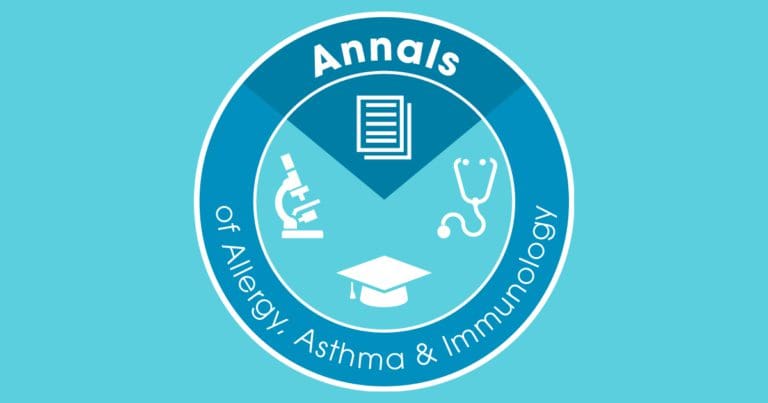The current issue of Annals of Allergy, Asthma & Immunology focuses on several key areas of interest for the practicing allergist-immunologist, with two articles on the use of biologics. The CME review article by Dr. Tanya Laidlaw discusses the use of biologics for the treatment of aspirin-exacerbated respiratory disease. She highlights the efficacy of each biologic with improvement in quality of life, restoration of smell, and reduced need for surgery, while balancing with adverse reactions. Read the article to see which biologic(s) come out on top. Don’t forget to claim your CME credit after reading the article.
Drs. Joana Caiado and Mariana Castells’ review explores desensitization to biologics and chemotherapeutics. The article focuses on the diagnosis and classifications of reactions, including specific IgE, drug challenges, and various biomarkers, as well as discussing risk factors for an increased rate of hypersensitivity reactions (HSRs) and three treatment options for preventing and treating these HSRs. An accompanying editorial by Drs. Nowak-Wegrzyn and Levi-Schaffer highlights the possibility of personalizing the management of drug allergy. On a related topic, Dr. Deniz Gocebe and colleagues discuss the implementation of a penicillin-related decision tree (PEN-FAST) for the diagnosis of non-beta-lactam antibiotic allergy with a similar rate of success as that seen with beta-lactam antibiotics.
In terms of original research, this month three articles focus on asthma, including a key aspect of removing race corrections in spirometry of children with asthma by Dr. Lina Mahmood et al. Dr. Susan Waserman and colleagues review data from Canada on the overuse of oral corticosteroids and beta-agonists and find that most patients with higher use of rescue medications have no biologic use. Finally, Dr. Stanley Galant and colleagues found that remote monitoring of inhaled corticosteroid use improved asthma outcomes, including emergency department use.
Finally, the ACAAI Yardstick program is back with a new yardstick that provides outstanding guidance for the diagnosis and management of mastocytosis and mast cell activation syndrome. Especially useful is Figure 1 in this article, which provides pathways for treatment. I would suggest keeping this figure (if not the whole article) to help with the diagnosis of these challenging patients.
As you read this issue of Annals, we hope you are enjoying the changing leaves that have heralded in the start of fall. As always, if you have any comments, please consider sending correspondence to Annals (email us at annals@ACAAI.org). We are always excited to hear how Annals has helped you improve the lives of your patients!
Jonathan Spergel, MD, PHD, FACAAI
Deputy Editor


